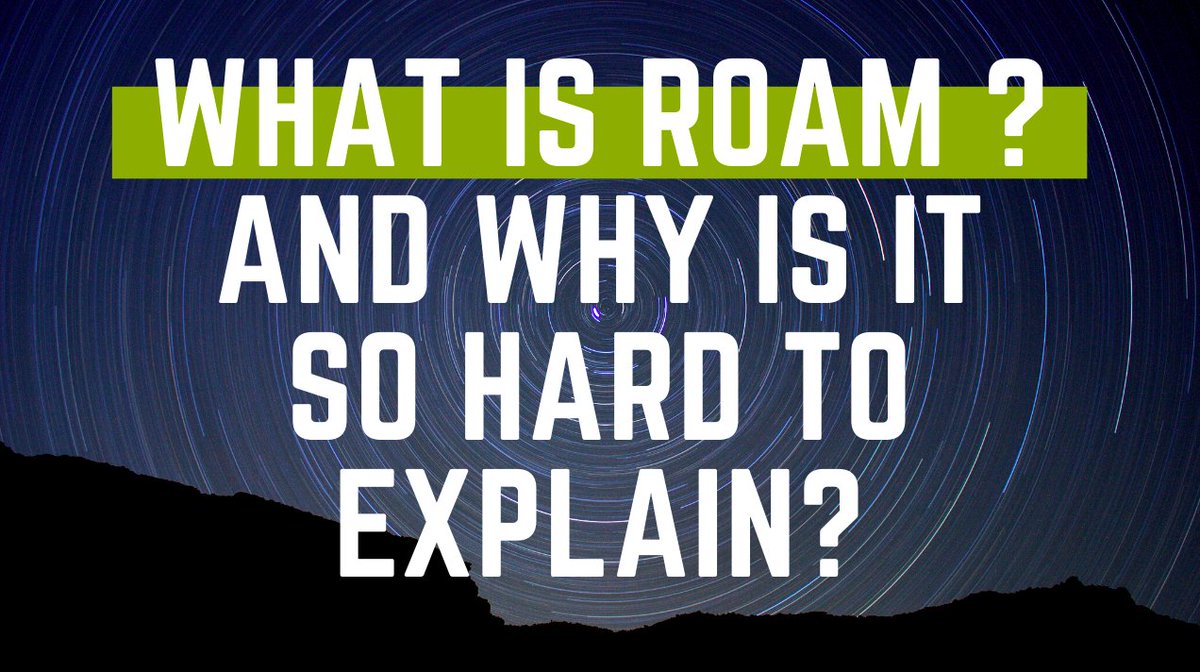
1/ A SHORT HISTORY OF ANTIFRAGILE INFORMATION: FROM LIFE TO ROAM
Life is antifragile information that travels through time using the fragility of matter as its vehicle.
What can @RoamResearch users learn from life?
Life is antifragile information that travels through time using the fragility of matter as its vehicle.
What can @RoamResearch users learn from life?
All life, as far as we know, stores information: the genome. This information directs the ordering of matter that allows the replication of the same information: organic bodies.
Bodies are made of matter. Matter degenerates as it travels through time. Information is stored in matter. Some are fragile: writing on parchment. Some are robust: chiseled on stone. Life is antifragile. Why?
Fragile: degenerates with stress. Robust: unaffected by stress. Antifragile: improves with stress. For life, improvement means better survival and replication, and stress is death and disorder.
Life is antifragile because it uses death and disorder to increase its ability to survive and replicate. The huge variety of organic bodies, a protection from variability of environments, came about from small disorders in information replication: mutation.
Some variations of bodies have a mechanism of controlled disorder to produce possibly better variations: sexual reproduction. The control of only swapping sections of the genome (genes) caps the downside, while being open to the upside: better fitness.
Today, there is a variant of these genome-carrying and -replicating bodies that have multiplanetary potential and who carry and replicate information using non-organic matter: humans. The activity of non-genomic information in humans is called "thinking."
Humans have created tools for thinking (eg, writing and paper). Humans have recently invented computing. Humans then started using computing for thinking. (Computing is also helping humans to understand the genome, but that's a whole other story).
One application of computing as an aid to thinking is called Roam. What can humans who use this tool learn from the OG antifragile information, life? What does it mean to systematically make your ideas antifragile?
Stress in ideas is forgetting, either by deletion or irretrievability. Improved ideas means better replication, and to humans, more truth, goodness and beauty. How do we use Roam to use forgetting to lead to better ideas?
An idea not released from the mind is fragile: it is prone to getting lost. An idea written is robust: it stays the same across time. An idea stored somewhere in the magic junkyard is lost until called to life by serendipity. Resurrected ideas increase in antifragility.
The temporary disappearance of an idea frees the human mind to process other ideas. The retrievability of forgotten ideas allows the different versions of the same human across time to think with ideas beyond the carrying capacity of their biological hardware.
This process has been done with writing on paper (ie, notes) and their translation in computing (digital notes). How do you use the power of computing to make ideas antifragile? This is the problem Roam is designed to solve. But Roam is a tool, like paper. How do you use it?
Let's learn from life. First, life is munificent with information, or in business English, life has an "abundance mindset." Only a small part of the genome is translated into bodies. Most are probably excess from evolution. Deleting genomic information is risky.
With good enough engineering, storage is cheap (the world's digital information fits inside a shoebox of DNA).
Tiago Forte's scarcity mindset comes from operating in the world of paper, and a world of software with no block references and primitive search (tip: shift+control+9).
Tiago Forte's scarcity mindset comes from operating in the world of paper, and a world of software with no block references and primitive search (tip: shift+control+9).
Second, life seeks mechanism for faster evolution (eg, sexual reproduction). The key step in the Zettelkasten is not the atomization of ideas (this is built-in in Roam), but the process of fabricating serendipity among them (eg, creating proto-drafts).
There are other ways to fabricate serendipity among ideas. For instance
-morning pages
-treating ideas as non-material beings that need you to fulfill their mission of manifesting themselves in the world
-using Twitter as inter-mind API
- (experimental) roam.cafe
-morning pages
-treating ideas as non-material beings that need you to fulfill their mission of manifesting themselves in the world
-using Twitter as inter-mind API
- (experimental) roam.cafe
The latter two make use of the human ability to transfer ideas across minds, imperfectly, like how the genome is replicated across lives of organisms.
There are probably more Roam techniques we could learn from life. This idea is now in inter-mind API. Your turn.
There are probably more Roam techniques we could learn from life. This idea is now in inter-mind API. Your turn.
• • •
Missing some Tweet in this thread? You can try to
force a refresh








